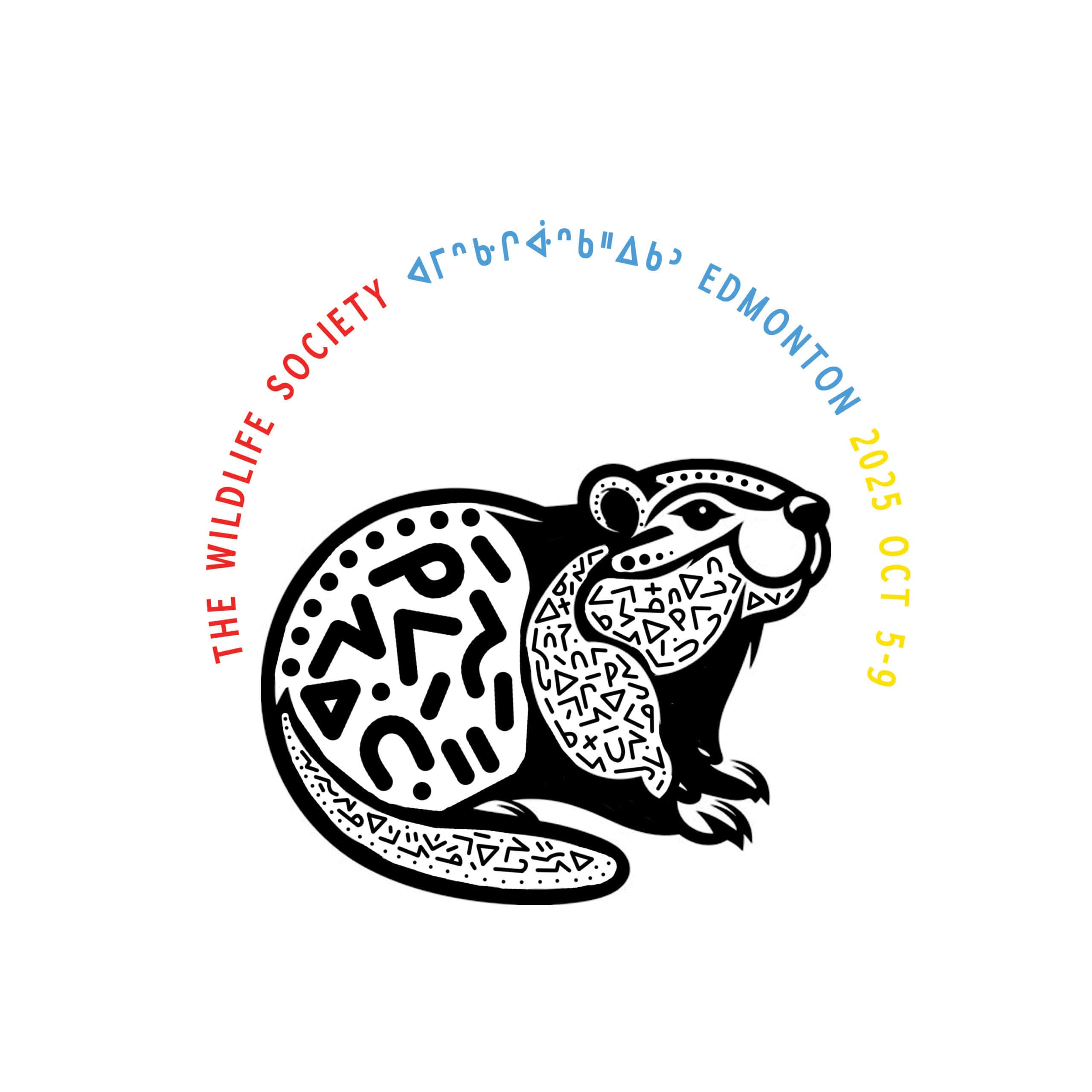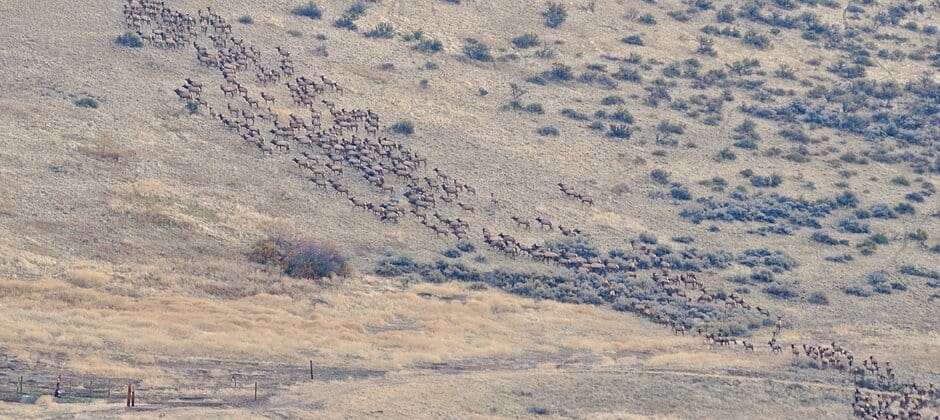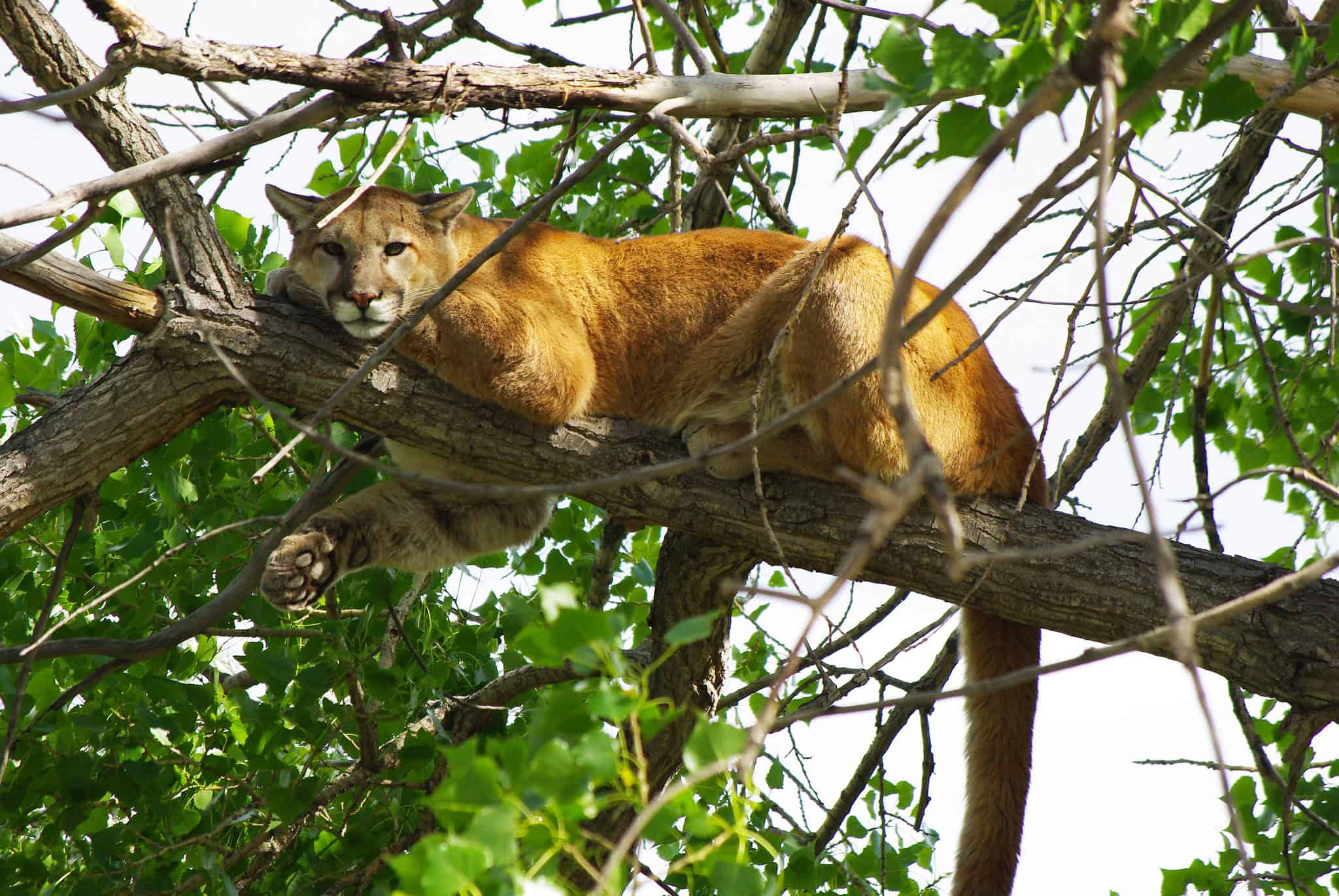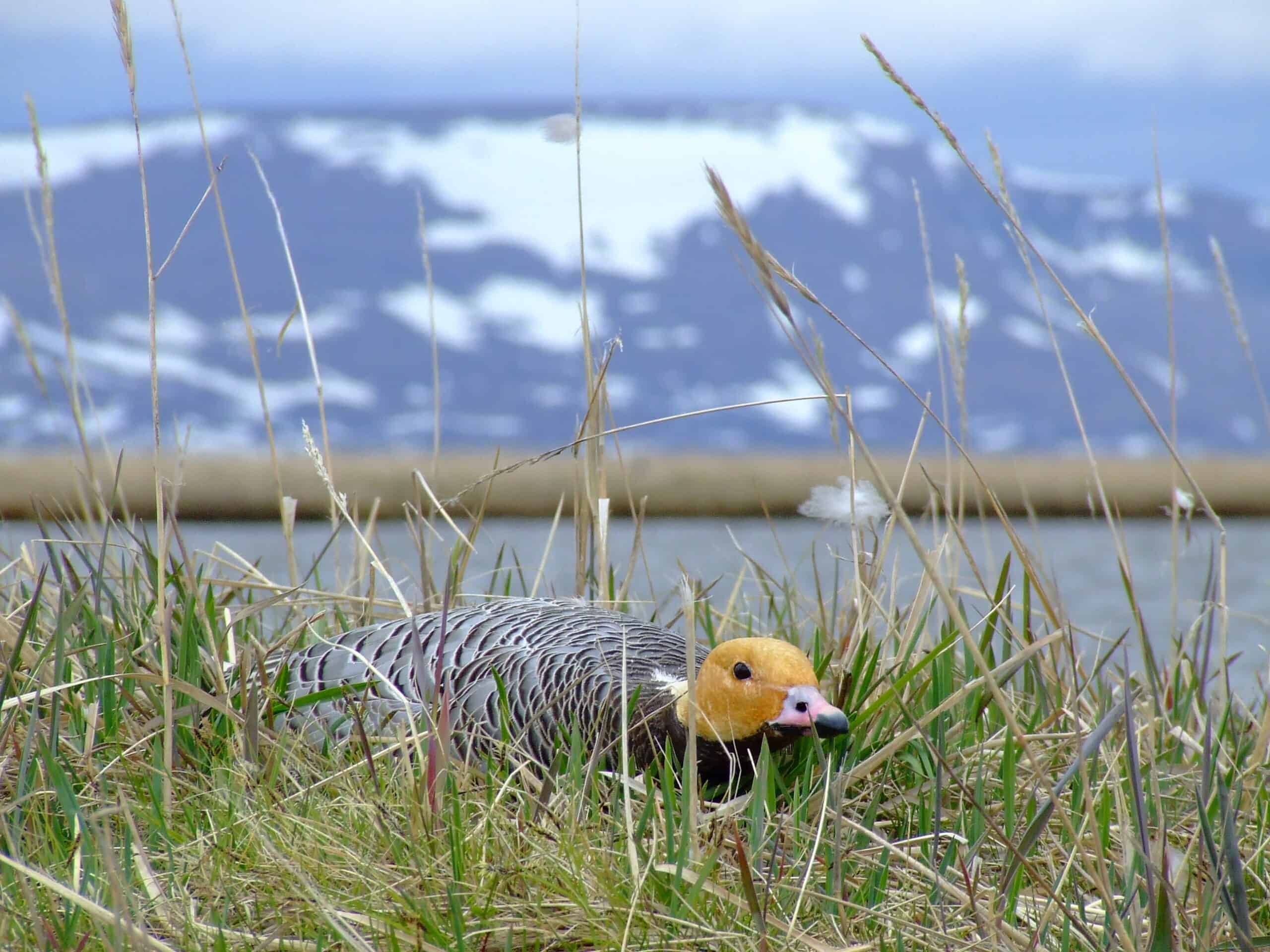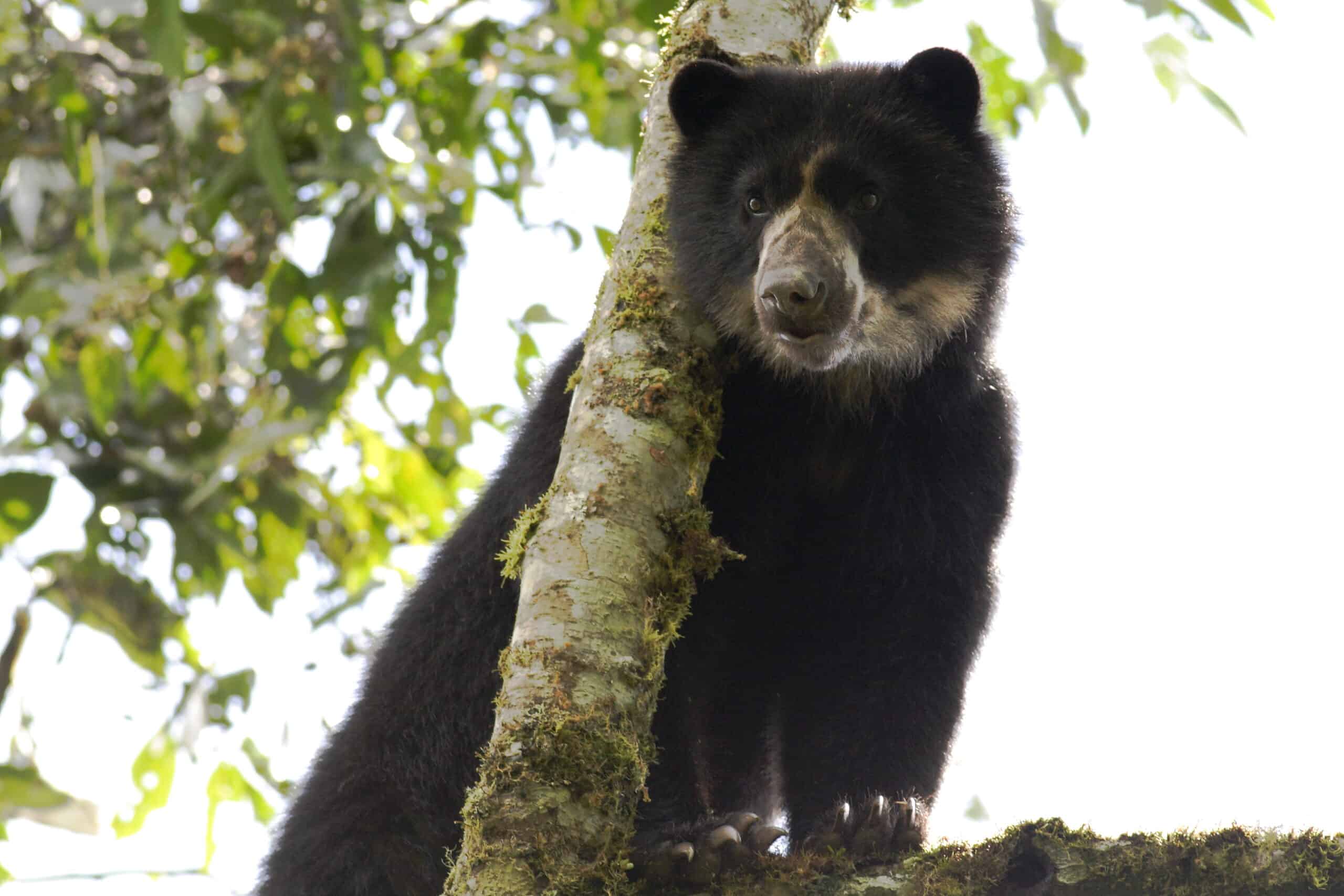Share this article
Q&A: Restoring lost migrations
Many wildlife managers are laser-focused on conserving endangered or threatened species, whether that means protecting and improving the ecosystems where they are currently found or reintroducing wildlife to areas from where they were extirpated.
But what happens when animals lose the generational knowledge that’s gained by following their elders on migratory journeys across, or between, continents?
For the eastern whooping crane (Grus americana), wildlife managers dressed up like cranes and led the birds on a journey using an ultralight aircraft to restore their migrations. But how can wildlife managers even begin to bring back species’ migrations when they don’t necessarily know where the species traveled and how it subsisted along the way?
In a review published recently in Conservation Letters, Kristin Barker, a PhD candidate studying environmental science at the University of California, Berkeley, and her co-authors examined this challenge. For its latest Q&A, The Wildlife Society connected with Barker to learn more about the concept of restoring lost migrations. The interview is edited for style and brevity.
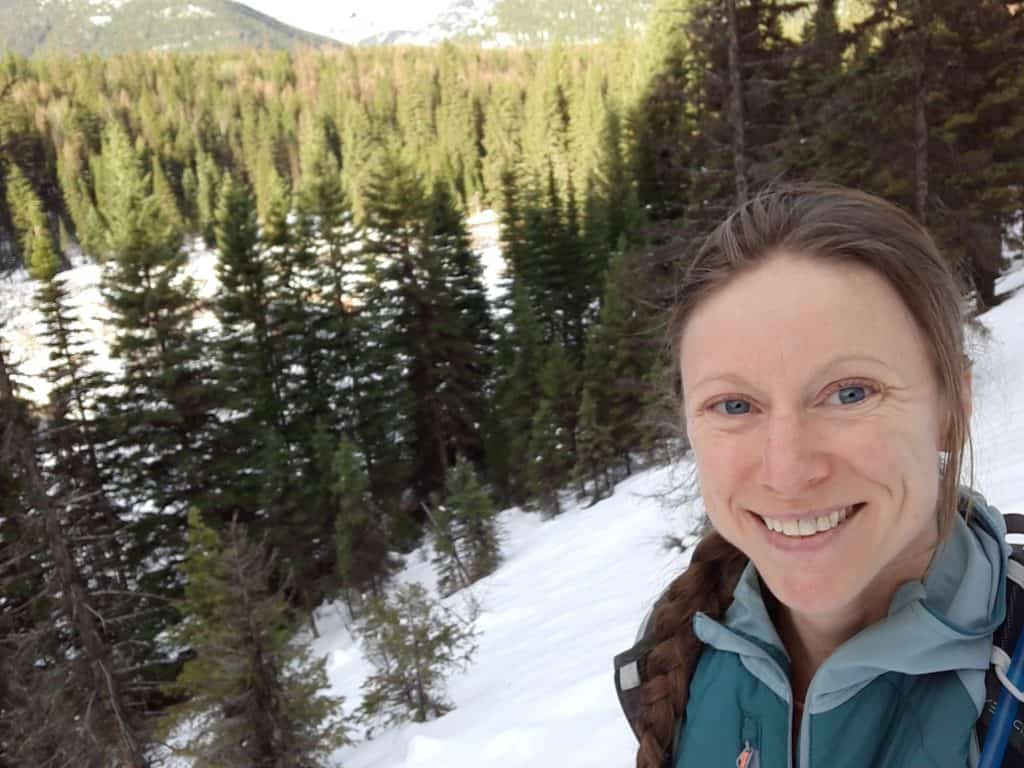
Kristin Barker is a PhD candidate at the University of California, Berkeley. Credit: Kristin Barker
Why have some migrations been lost?
The causes of loss can be as varied as the migrations, themselves. Generally speaking, the most common causes are habitat loss, barriers to movement, and changes in climate that alter the timing or location of the resources that migrants would traditionally travel to obtain.
What do we lose when migratory pathways are changed or lost?
From a purely human-centric perspective, lost migrations can have huge impacts on local and national economies. For example, a lack of Pacific salmon or northern pintail (Anas acuta) populations in their seasonal migratory ranges would result in a loss of more than $1 billion per year from local economies. Losing migratory ungulates from Yellowstone National Park could cost the region hundreds of millions of dollars due to tourism decline. From an environmental perspective, losing migrations can drastically alter the structures and functions of ecosystems, often to the detriment of multiple species and ecological processes.
How can we trace the path of lost migrations?
Some of the best knowledge can come from Indigenous groups that lived with—and sometimes even followed—migratory species for generations. We can also look to old naturalist records and notes, historic paintings and photographs of wild animals, and information gathered from long-term monitoring studies. As migrations continue to shift, decline and disappear, we’re using increasingly sophisticated radio tracking and computing technologies to trace paths more precisely.
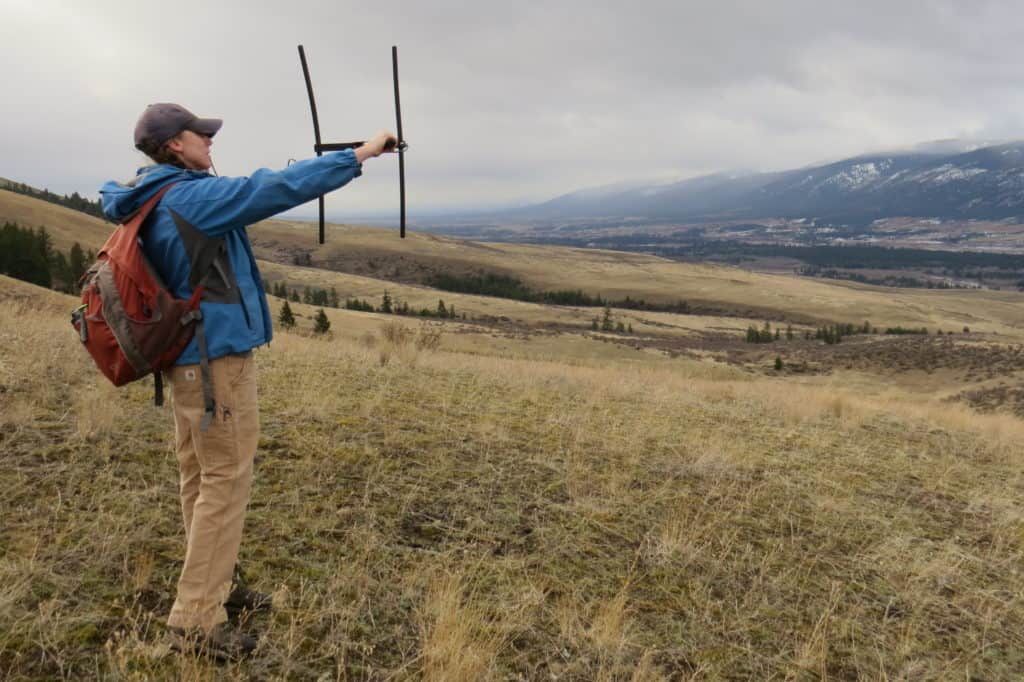
Barker tracks elk with a radio-transmitter device. Credit: Ben Jimenez
Why do scientists want to restore lost migrations?
Migrants are incredibly important ecologically—they connect habitats and directly affect all trophic levels. Their many ecological benefits include transferring nutrients, stabilizing soil carbon, improving net primary productivity, sustaining species in higher trophic levels, and supporting biodiversity across broad landscapes. Restoring lost migrations can help bolster ecosystem functioning and resilience. For instance, migrants responsible for broad-scale seed dispersal can help plants colonize new habitats that are more suitable under changing climate conditions. It’s important to note, though, that we don’t always want to restore lost migrations. If migrating actually makes a population worse off, or if we know long-term restoration would be impractical or impossible, it may be better to direct limited conservation resources elsewhere.
What’s an example of the restoration of a lost migration?
To prevent disease transmission between wildlife and cattle, veterinary cordon fences were installed across Botswana in the 1950s-1980s. These fences had some benefits as far as protecting wildlife in certain areas but also came at a cost of cutting off historic migratory routes for animals like wildebeest (Connochaetes taurinus) and zebras (Equus burchelli antiquorum). Fences were removed in the early 2000s, and within four years, zebras were recorded migrating along those historic routes they hadn’t used for decades.
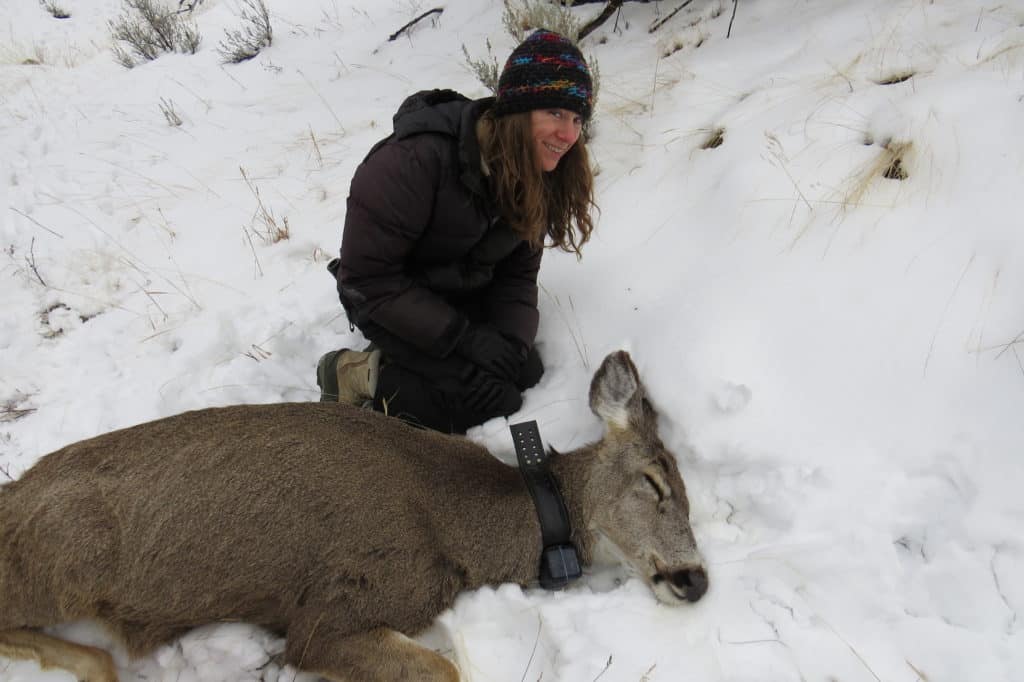
Barker with an anesthetized mule deer (Odocoileus hemionus). Credit: Rebecca Mowry
What are some of the major obstacles to restoring lost migrations?
Two of the biggest obstacles are limited resources and an incomplete understanding of behavioral mechanisms related to migration. On the resource front, some restorations can just be single efforts (like restoring a degraded wetland that many species of migratory birds subsequently use), but more often they require multiple interventions or even continuous work (like operating dam passages for migratory fish every year). On the behavioral front, the most effective restoration efforts address the underlying behavioral mechanisms that drive migratory behavior, but those mechanisms aren’t always well-known. For example, some animals that are relocated to new areas will naturally migrate back to those target areas each year, whereas others will return to their natal birth site. Similarly, no matter how well you might be able restore a degraded migratory habitat, animals that rely on learning to migrate from members of the same species aren’t going to start migrating back to that area on their own, whereas animals more open to exploration may naturally recover that migration.
We’ve recognized how important it is to conserve migration for more than a century, from the U.S. Migratory Bird Treaty Act of 1918, to the United Nation’s Convention on the Conservation of Migratory Species of Wild Animals treaty of 1979, to the Department of the Interior’s recent Secretarial Order 3362 to improve habitat for migratory big game. When we think about wildlife conservation or restoration, we’re usually thinking about physical animals or their habitats. I would argue that natural behavior is an equally important consideration.
Header Image: Elk (Cervus canadensis) move up the Bitterroot mountains in Montana in the fall. Credit: Kristin Barker


